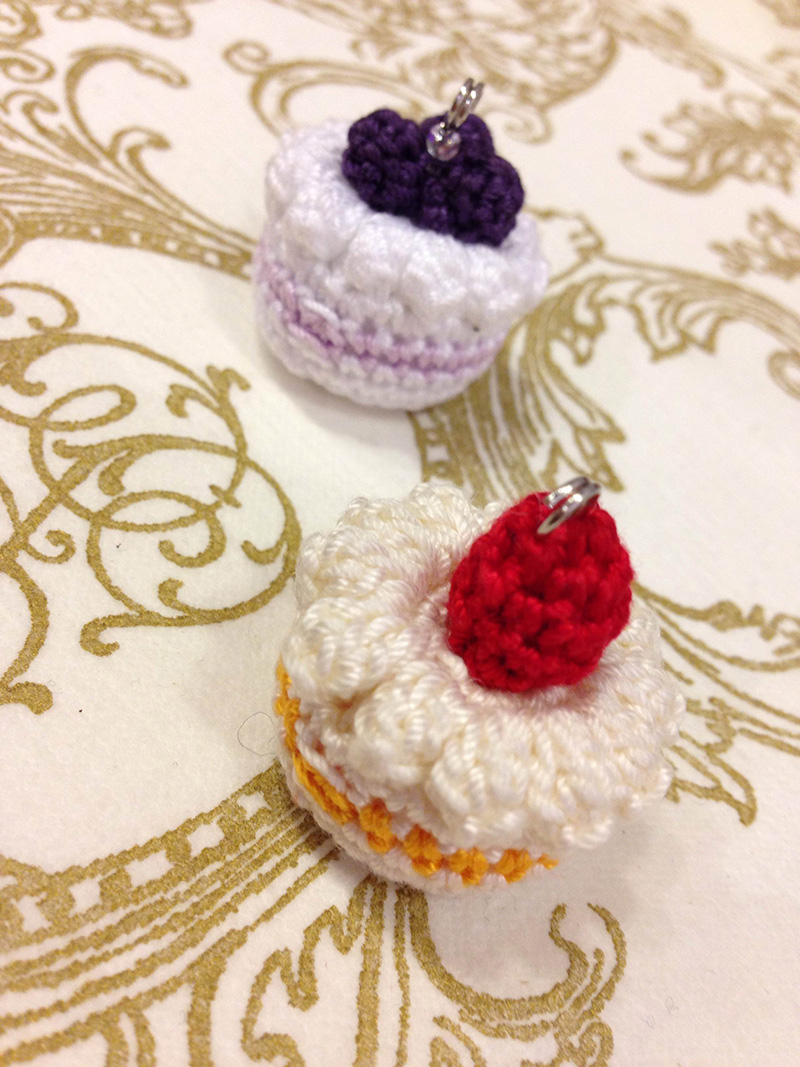Masumi Saito, who produces children’s clothing and fabric accessories from her brand named “sinafuku”, is familiar to you since her items are frequently featured in this website. She is very good at making use of printed-fabric to create vivacious items. Her creations are not only cute but also highly practical. That’s why Saito’s products are always popular among mothers caring for small children. The “candy-shaped purse”, which she created with “Tabris” fabric of Plump Cheeks for our Craft & Sewing column (the Japanese-language version) posted on 11/20/2013, is full of the features and spirit of “sinafuku”.
Saito said she really loved the “Tabris” print with angel & unicorn motifs and would want to make other things with it. True to her words, a skirt has been sewn with black “Tabris” which she didn’t use for the candy-shaped purse. By adding a blue lace trim makes the skirt cute and girlie.
The girl wearing the skirt in the above picture is Saito’s oldest daughter. The skirt and the candy-shaped purse from same fabrics in a different coloration are perfectly matched. For her daughter, Saito coordinated the solid purple tops to bring out the printed skirt. With the same colored tights and black boots, the girl became very stylish. Saito will soon post the sewing tutorial for the skirt in her blog. I can’t wait to know how to make it.
But wait, there’s more! I recently received a message from Saito that she also made a ribbon headband with the leftover fabric after the rest had been used for the skirt. No doubt the cute headband is frequently used in the holiday party season. Hoping that it will be shown in her blog, too.
You can see the blog of Masumi Saito at http://ameblo.jp/kittenishgirl-sinafuku/


 Inspiration file 27
Inspiration file 27 Inspiration file 45 Cosplay*1) dresses with fun fabric
Inspiration file 45 Cosplay*1) dresses with fun fabric Inspiration file50
Inspiration file50

 A-Line Reversible Dress – Sewing Instruction
A-Line Reversible Dress – Sewing Instruction Tunic dress
Tunic dress Tunic Style Dress
Tunic Style Dress
 Mini Boston Bag
Mini Boston Bag Tote bag with basket print fabric & strawberry print lining
Tote bag with basket print fabric & strawberry print lining Triangular Boston Bag
Triangular Boston Bag
 Tulip print mini Boston bag
Tulip print mini Boston bag Fluffy Tote in Animal Print Fabric
Fluffy Tote in Animal Print Fabric Miniature Basket-Style Bag
Miniature Basket-Style Bag
 Inspiration file20
Inspiration file20 Inspiration file60
Inspiration file60